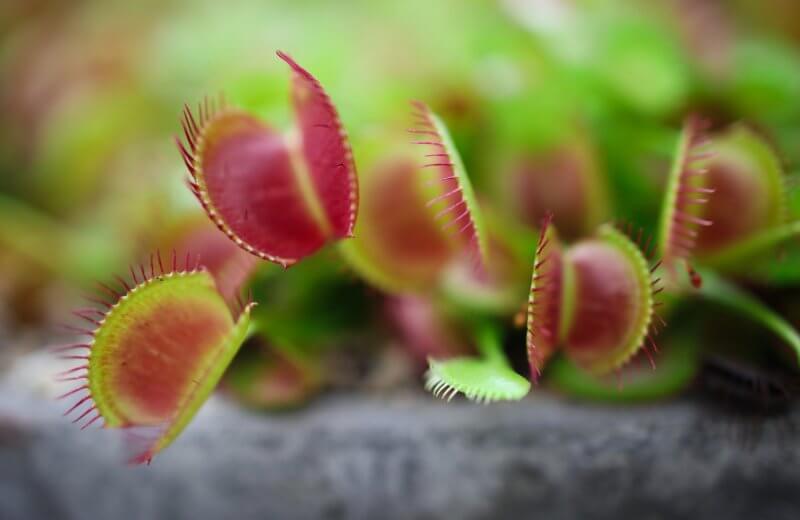Murderous plants
[vc_row][vc_column][vc_column_text]
If you are like me, you assume that every time an insect meets a plant, that insect will eat that plant. And yes, you’ve heard of insectivorous plants, but those are typically not in your backyard. Instead, we mostly see insects eating plants: hornworms on the tomato plants, Japanese beetles on your flowers, leek moths drilling holes in your green onions, and webworms helping out in controlling wild parsnips. But, of course, insects are not always eating plants either!There are also lots of lovely things insects do, for example, pollinating—flying from flower to flower, spreading the pollen picked up at the stamens of the one to the stigmas of the others. Honey bees do that, but so do a whole lot of other insects. Together they are called pollinators. In general, plants reward these insects for their work with nectar, a sugary water that bees can make into honey through evaporation, a little like making maple syrup. But it is not always for the reward that insects pollinate flowers. There are many fascinating ways that plants can trick insects in other ways to perform this action. And while this is really interesting, it’s not really what I wanted to write about!

I want to write about plants being the aggressors—and specifically about insectivorous plants that digest animals. Why plants eat insects is fairly well known: they benefit from the nitrogen locked up in the proteins of the critters they digest to build their own proteins. Carnivorous plants typically grow where the availability of nitrogen is scarce. Not really nitrogen, as roughly 80 percent of air is nitrogen, but the nitrogen that is bonded to oxygen as nitrate. Unlike phosphates (phosphorus bonded to oxygen), nitrate is easily dissolved in water and easily flushed from the soil. Have you ever noticed that your garden vegetables turn yellow after several rainstorms?
There are several very well-known carnivorous plants native to bogs, such as pitcher plants, Venus flytraps and sundews. Bladderwort is also a species of floating vegetation with small yellow flowers native to lakes and ponds, including Lake Champlain. These plants have small hollow sacs that actively capture and digest tiny animals, such as insect larvae, aquatic worms and water fleas, making do in the low-nitrogen environment on the top of a water column.
These particular carnivorous plants are not on your property unless you own a bog or pond, but others are. Researchers are finding that the ability to digest insects is really not so unusual. According to researchers, there may be an obscure little plant in your yard called shepherd’s purse with carnivorous seeds. These seeds possess a sticky layer with chemicals that can attract, kill and digest mostly microscopic roundworms.
There are other insectivorous plants here in Charlotte that are not obscure at all. I have noticed an increase in cup plants that are typically 3–8 feet tall and have lovely yellow flowers on my land. The stem is square, and the stalks that attach the leaf blades to the stem are fused around it to form cups. I never knew what that cup was for. Because it does collect water, I thought maybe this was how that plant dealt with periods of drought. Only recently, I learned that my suspicion was far from the truth. That water is there to attract insects for them to drown. The water contains enzymes to metabolize their flesh, and the organs in the stalks are there to absorb the digested insects into the plant.
After I learned about the cup plant’s murderous nature, I started looking for other vegetation with this kind of feature. I came across one of our invasive plants with the same cup formation around the stem: the cut leaved teasel. Here in Charlotte, we find it in fields, roadsides and waste areas. It was introduced around the 18th century to New England from Europe for carding wool and, from what I’ve heard, abandoned after the carders found out it was the wrong plant.
Although I have not kept records to prove my point, I have seen more cup plants and cut leaved teasel than ever before along our roadsides. Is it possible that the heavy rains we experience in spring flush enough nitrates out of the soil to lead to an increase in carnivorous plants in our landscape? Keep an eye out!
Roelof Boumans is a member of the Charlotte Conservation Commission. The commission meets on the 4th Tuesday of every month via Zoom. Please see the town calendar for agendas and meeting information.[/vc_column_text][/vc_column][/vc_row]

